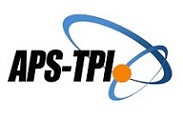Digitalisasi Media Objek 3 Dimensi Kabel Fiber Optic Berbantuan Piramida Hologram Untuk Sekolah Menengah Kejuruan
Abstract
Abstrak: Penelitian ini bertujuan mengembangkan produk berupa objek 3 dimensi kabel fiber optic yang ditampilkan pada piramida hologram yang valid dan layak digunakan untuk kegiatan belajar siswa Sekolah Menengah Kejuruan sebagai media pembelajaran. Tampilan hologram objek 3 dimensi yang ditayangkan berbentuk digital dan mempunyai kelebihan yaitu menghasilkan tampilan 360o yang dapat dilihat dari sudut manapun sehingga memudahkan siswa mendapat informasi secara utuh. Penelitian ini menggunakan model pengembangan Sadiman (2010). Pada penerapannya obyek 3 dimensi kabel fiber optic berbantuan piramida hologram hanya sampai tahap uji validitas media. Hasil validasi ahli materi memperoleh nilai rata-rata 93,3% dan ahli media sebesar 97%. Dari hasil validasi ahli disimpulkan bahwa objek 3 dimensi kabel fiber optic berbantuan piramida hologram dinyatakan valid serta layak digunakan dalam pembelajaran. Objek 3D berbantuan piramida hologram mampu menjadi solusi guru dalam menjelaskan materi pembelajaran dan dapat meningkatkan semangat siswa untuk belajar.
Abstract: This study aims to develop products in the form of 3-dimensional objects of optical fiber cable displayed on a holographic pyramid that are valid and suitable for use in learning activities of Vocational High School students as learning media. The 3-dimensional holographic display of the displayed object is digital and has the advantage of producing a 360o display that can be seen from any angle making it easier for students to get complete information. This study uses the Sadiman development model (2010). In its application, the 3-dimensional object of optical fiber cable assisted by the hologram pyramid only reaches the stage of media validity testing. The results of the validation of the material experts obtained an average value of 93.3% and 97% of the media experts. From the results of expert validation, it was concluded that the 3-dimensional object of optical fiber cable assisted by the hologram pyramid was declared valid and suitable for use in learning. 3D objects that are assisted by the hologram pyramid are able to be the teacher's solution in explaining learning material and can increase students' enthusiasm for learning.
Keywords
Full Text:
PDFReferences
Ahmad, S. A., Abdullahi, I. M., & Usman, M. (2015). General Attitude and Acceptance of Holography in Teaching among Lecturers in Nigerian Colleges of Education. IAFOR Journal of Education.
Arifah, A., Firdausi, K. S., & Azam, M. (2007). Pembuatan Hologram Refleksi. BERKALA FISIKA, 10(3), 127–135.
Arifudin, A., Kuswandi, D., & Soepriyanto, Y. (2019). Pengembangan Media Obyek 3 Dimensi Digital Sel Hewan dan Tumbuhan Memanfaatkan Piramida Hologram Untuk MTS. Jurnal Kajian Teknologi Pendidikan, 2(1), 9–15.
Barkhaya, N. M. M., & Halim, N. D. A. (2016). A Review Of Application Of 3D Hologram In Education: A Meta-Analysis. 2016 IEEE 8th International Conference on Engineering Education (ICEED), 257–260.
Bhatti, Z., Abro, A., Gillal, A. R., & Karbasi, M. (2018). Be-Educated: Multimedia Learning through 3D Animation. ArXiv Preprint ArXiv:1802.06852.
Bower, M. (2019). Technology‐Mediated Learning Theory. British Journal of Educational Technology, 50(3), 1035–1048.
Burdea, G. C., & Coiffet, P. (2003). Virtual Reality Technology. John Wiley & Sons.
Gafur, I. A. (2019). Mixed Reality Application as a Learning System of Motion Systems using Pyramid Hologram Technology. Journal of Physics: Conference Series, 1351(1), 12077.
Ghuloum, H. (2010). 3D Hologram Technology In Learning Environment. Informing Science & IT Education Conference, 693–704.
Henderson, M., Selwyn, N., & Aston, R. (2017). What works and why? Student perceptions of ‘useful’digital technology in university teaching and learning. Studies in Higher Education, 42(8), 1567–1579.
Hermawan, H., Riyana, C., & Zaman, B. (2007). Media Pembelajaran SD. Bandung: UpinPress.
Hew, K. F., & Cheung, W. S. (2013). Use of Web 2.0 Technologies in K-12 and Higher Education: The Search For Evidence-Based Practice. Educational Research Review, 9, 47–64.
Iwamoto, T., Tatezono, M., & Shinoda, H. (2008). Non-Contact Method For Producing Tactile Sensation Using Airborne Ultrasound. International Conference on Human Haptic Sensing and Touch Enabled Computer Applications, 504–513.
Kalansooriya, P., Marasinghe, A., & Bandara, K. (2015). Assessing the Applicability of 3D Holographic Technology as an Enhanced Technology for Distance Learning. IAFOR Journal of Education.
Kalarat, K. (2017). The Use Of 3d Holographic. Pyramid For The Visual Iza Tion Of Sinoportuguese Architecture. Journal of Informatio N, 2(5), 18–24.
Khan, A., Mavers, S., & Osborne, M. (2020). Learning by Means of Holograms. Society for Information Technology & Teacher Education International Conference, 1134–1139.
Kling, R. (1996). Computerization and controversy: Value conflicts and social choices. Elsevier.
Kurniawan, D., Susilaningsih, S., & Soepriyanto, Y. (2019). Pengembangan Media Obyek 3d Vacuum Circuit Breaker Memanfaatkan Piramida Hologram. Jurnal Kajian Teknologi Pendidikan, 2(1), 16–22.
Kurniawan, M. H., & Witjaksono, G. (2018). Human Anatomy Learning Systems Using Augmented Reality On Mobile Application. Procedia Computer Science, 135, 80–88.
OKULU, H. Z., & ÜNVER, A. O. (2016). Bring Cosmos Into The Classroom: 3d Hologram. Education Research Highlights in Mathematics, Science and Technology 2016, 81.
Plowman, L. (2016). Learning Technology At Home And Preschool. The Wiley Handbook of Learning Technology. Chichester, UK: Wiley Blackwell, 96–112.
Roslan, R. K., & Ahmad, A. (2017). 3D Spatial Visualisation Skills Training Application for School Students Using Hologram Pyramid. JOIV: International Journal on Informatics Visualization, 1(4), 170–174.
Ryu, J., Kim, M., Min, Y., Jung, M., Lee, J., Lee, S., Cho, E., & Joo, W. (2016). Exhibition Strategy of Digital 3D Data of Object in Archives using Digitally Mediated Technologies for High User Experience.
Salih, Sarah Q Mohammed, Sulaiman, P. S., Khammas, A. S. A., Mahmod, R., & Rahmat, R. W. O. K. (2019). Opacity Influenced Inconstant Method For 3d Holographic Pyramid Rendering. Al-Mustansiriyah Journal of Science, 30(4), 57–70.
Salih, Sarah Qahtan M, Sulaiman, P. S., Ramlan, M., & Rahmat, R. W. O. K. (2017). 3D Holographic Rendering For Medical Images Using Manipulates Lighting In A 3D Pyramid Display. Journal of Advanced Science and Engineering Research, 7(1).
Soepriyanto, Y., Sihkabuden, S., & Surahman, E. (2019). Pengembangan Obyek 3d Digital Pada Meja Piramida Hologram Untuk Pembelajaran Kelas. Jurnal Kajian Teknologi Pendidikan, 1(4), 333–339.
Susilana, R., & Riyana, C. (2008). Media Pembelajaran: Hakikat, Pengembangan, Pemanfaatan, Dan Penilaian. CV. Wacana Prima.
Tawaqqal, I., Ningrum, I. P., & Yamin, M. (2017). Hologram Holographic Pyramid 3 Dimensi. SemanTIK, 3(1).
Than, M. H. N., Pham, M. M. N., & Pham, H. T.-T. (2018). Pyramid Hologram in Projecting Medical Images. International Conference on the Development of Biomedical Engineering in Vietnam, 421–426.
Tiro, D., Poturiović, A., & Buzadjija, N. (2015). The Possibility Of The Hologram Pyramid Applying In The Rapid Prototyping. 2015 4th Mediterranean Conference on Embedded Computing (MECO), 25–30.
Tscheligi, M., Markopoulos, P., Wichert, R., Mirlacher, T., Meschterjakov, A., & Reitberger, W. (2009). Ambient Intelligence: European Conference, AmI 2009, Salzburg, Austria, November 18-21, 2009. Proceedings (Vol. 5859). Springer.
DOI: http://dx.doi.org/10.17977/um038v3i42020p366
Refbacks
- There are currently no refbacks.
Copyright (c) 2020 Miftachul Rohana Sari, Yerry Soepriyanto, Agus Wedi

This work is licensed under a Creative Commons Attribution-ShareAlike 4.0 International License.
JKTP: Jurnal Kajian Teknologi Pendidikan published by Department of Educational Technology, Faculty of Education, State University of Malang in Collaboration with Asosiasi Program Studi Teknologi Pendidikan Indonesia (APS TPI).
Publisher Address:
Lab. Teknologi Pendidikan, Gd.E2, Lt.1
Fakultas Ilmu Pendidikan Universitas Negeri Malang
Jl. Semarang 5, Kota Malang Email: jktp.fip@um.ac.id
========================================================================================================
| INDEXED BY | TOOLS | PLAGIARISM CHECK | ARTICLE TEMPLATE |
|
|

JKTP: Jurnal Kajian Teknologi Pendidikan is licensed under a Creative Commons Attribution-ShareAlike 4.0 International License.
JKTP Statistics (Since July 13th, 2020)






.png)












